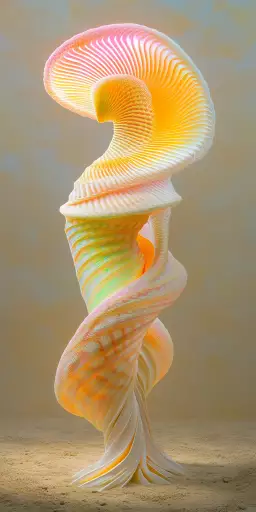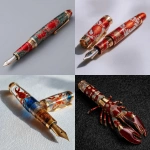Explore the Best AI Image Gallery

Beyond the Brush: How AI-Generated Visual Content is Transforming Creativity
The realm of art and design has always been a space of innovation, constantly pushing boundaries and exploring new mediums. Today, a groundbreaking technology is reshaping this landscape: AI-generated visual content. From stunningly realistic images to unique artistic expressions, AI is proving to be a powerful tool in the hands of creatives, offering both exciting possibilities and complex ethical considerations.
A New Canvas for Artistic Expression
AI algorithms, trained on massive datasets of images and code, are capable of generating original artwork, graphics, and even video content. This opens up a world of possibilities for artists who can now leverage AI as a collaborative tool to enhance their creative process. Imagine an artist sketching a concept, then using AI to refine the details, explore different color palettes, or even generate variations on their initial design.
Applications Across Industries
The impact of AI-generated visual content extends far beyond traditional art forms. Here are just a few examples:
- Marketing and Advertising: AI can create eye-catching visuals for campaigns, personalized product mockups, or even dynamic content that adapts to user preferences.
- Design and Architecture: Architects and designers can utilize AI to generate conceptual sketches, explore different building layouts, or visualize interior designs with photorealistic renderings.
- Entertainment and Gaming: AI can create immersive game environments, generate realistic character models and animations, or even design dynamic storylines that adapt to player choices.
Ethical Considerations: Navigating Uncharted Territory
While the potential of AI-generated visual content is immense, it also raises important ethical questions:
- Authorship and Ownership: Who owns the copyright to AI-generated artwork? Is it the creator who provided the initial input, the AI developer, or the user who employs the AI?
- Bias and Representation: AI algorithms are trained on existing data, which can perpetuate societal biases. Its crucial to ensure that AI-generated content is inclusive and representative of diverse cultures and perspectives.
- Job displacement: As AI becomes more sophisticated, there are concerns about its potential impact on creative jobs. However, its also important to recognize that AI can augment human creativity and open up new job opportunities in areas such as AI training and content curation.
The Future of Creativity: A Symbiotic Relationship
Looking ahead, the future of creativity lies in a symbiotic relationship between humans and AI. AI will continue to evolve, providing powerful tools for artists, designers, and innovators to explore new frontiers. However, its essential to approach this technology with careful consideration, addressing ethical concerns and ensuring that AI empowers rather than replaces human creativity.
The canvas is no longer limited to paint and brushstrokes; it extends to the realm of algorithms and data. As we navigate this exciting new landscape, let us embrace the transformative power of AI while upholding the core values of human ingenuity, imagination, and artistic expression.



